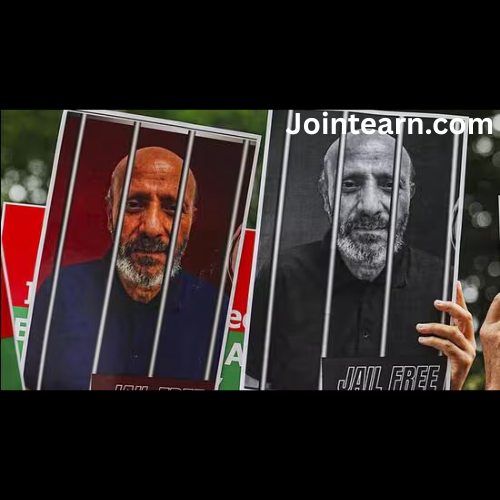By Nov 6, 2025
In a coordinated move aimed at strengthening creditor protection and expediting corporate insolvency resolutions, the Enforcement Directorate (ED) and the Insolvency and Bankruptcy Board of India (IBBI) have issued a standard operating procedure (SOP) for restitution of properties attached under the Prevention of Money Laundering Act (PMLA). The SOP provides a clear framework for using such assets in insolvency proceedings while ensuring that no undue advantage flows back to promoters or accused individuals.
Mechanism for Restitution
The new SOP empowers Resolution Professionals (RPs) to provide a formal undertaking to the courts, stating that assets attached under PMLA during insolvency proceedings can only be used for the benefit of creditors, including banks, financial institutions, and homebuyers. This ensures that the restitution of attached properties aligns with the objectives of the Insolvency and Bankruptcy Code (IBC), which prioritizes maximization of value for stakeholders.
According to the ED, the circular issued by IBBI on November 4 formalizes this mechanism and provides guidance on the process for RPs to seek release of PMLA-attached assets through Sections 8(7) and 8(8) of the Act. These sections specifically deal with restitution of properties attached in the course of investigation or adjudication.
The process ensures:
- Exclusive benefit for creditors: Restituted assets are utilized solely to repay creditors and protect victims of corporate frauds.
- No flowback to accused or promoters: Strict safeguards are in place to prevent misappropriation of restituted assets.
- Full compliance and reporting: Resolution professionals must maintain detailed reporting and adhere to compliance requirements until the resolution process is complete.
Need for the SOP
In several high-profile cases, including Reliance Communications (Anil Ambani group), Dewan Housing Finance Ltd (DHFL), and Bhushan Steel Ltd, the ED had attached assets under PMLA due to allegations of financial misconduct or fraud. While such attachment ensures legal accountability and prosecution of offenders, it has often posed challenges in the resolution of companies under the IBC, as these assets could not be utilized for debt recovery.
The SOP addresses this conflict by creating a coordinated framework between enforcement and insolvency mechanisms. By enabling RPs to access attached assets under controlled conditions, the measure accelerates the Corporate Insolvency Resolution Process (CIRP) and reduces prolonged litigation surrounding asset restitution.
Impact on Creditors and Victims
The ED reported that, under its ongoing enforcement measures, assets worth over ₹34,580 crore have been restituted to creditors and victims of financial frauds to date. Of this, more than ₹15,000 crore is linked to fugitive economic offenders such as Vijay Mallya, Nirav Modi, and Mehul Choksi.
By aligning PMLA enforcement with IBC-driven resolution, the new SOP demonstrates that the dual objectives of prosecuting economic offenders and maximizing recovery for creditors are not mutually exclusive. Instead, they complement each other when a structured mechanism is implemented.
Reactions from Legal Experts
Senior advocate Vikas Pahwa welcomed the development, calling it a pragmatic and balanced approach. He noted that the SOP strengthens the insolvency ecosystem by ensuring that enforcement under PMLA does not impede the value maximization goals of IBC. By allowing attached assets to be utilized for creditor recovery under strict safeguards, the initiative not only expedites resolution but also reduces litigation and aligns enforcement with broader public and economic interest.
Coordinated Approach Between ED and IBBI
The SOP is the outcome of multiple rounds of coordination meetings between the ED and IBBI. Both agencies agreed on the need to:
- Facilitate timely restitution of attached assets during CIRP or liquidation.
- Ensure that the resolution process is not hindered by legal complications arising from PMLA attachment.
- Protect public and creditor interests while maintaining accountability of promoters and other accused parties.
The circular issued by IBBI provides a standard undertaking template for resolution professionals to submit to the special court. This undertaking ensures that assets released under PMLA attachment are strictly used for debt repayment and remain protected from misuse until the completion of insolvency proceedings.
Broader Implications
The move highlights the evolving approach of Indian regulators in balancing enforcement and economic revival. By integrating PMLA enforcement with insolvency proceedings, authorities are demonstrating that legal accountability and financial restructuring can go hand in hand.
The SOP is expected to:
- Speed up resolution processes for companies with assets attached under PMLA.
- Minimize court interventions and litigation delays.
- Improve recovery rates for banks, financial institutions, and retail creditors such as homebuyers.
- Enhance confidence in the insolvency framework, particularly for companies facing complex enforcement cases.
In summary, the SOP issued by ED and IBBI represents a significant step in harmonizing financial enforcement with corporate restructuring, ensuring that proceeds of crime do not benefit offenders while simultaneously protecting the rights of creditors and promoting timely economic resolution.
This development is expected to have a lasting impact on the IBC ecosystem, particularly for high-value corporate cases where PMLA attachment has previously complicated insolvency proceedings, marking a new phase of coordinated financial governance in India.


Leave a Reply